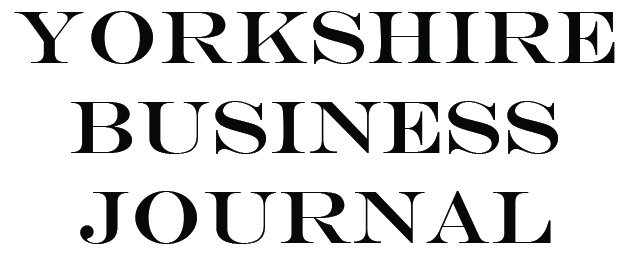Cheney Payroll Services

experts in payroll systems
Name: Martyn Cheney
Webiste: www.cheneypayrollservices.co.uk
Position in the company: Director/Owner/Payroll Consultant
Years with the company: 5
Number of employees: Me
Yearly revenue: £ 110k (2019)
How important is to implement a payroll system in SMEs? Offering an outsourced payroll service to cut SMEs operational costs, could you please elaborate and support with some numbers?
It all depends on the size and set up of the business. If a business is investing in HR and Finance Support teams, then they may also want to incorporate payroll into these support functions. If, however, they outsource these forms of support, then outsourcing payroll would be the most cost-effective and time-saving option.
The beauty of payroll in today’s modern world is that there are various options for software, whether outsourcing or managing inhouse. Each has its own characteristics that are designed to suit businesses of different sizes and complexities, meaning there’s a solution for almost everyone.
Outsourcing payroll via a bureau is a viable option for SMEs looking to cut costs. If you had an internal payroller on a salary of £20,000 for example, the cost with additional charges would be £22,698 per annum. However, based on our pricing structure of £3.50 plus VAT per payslip/employee, unless you have over 400 employees where it then stops being cost-effective, outsourcing is a cheaper option.
Let’s say for example you have 100 employees paid monthly. The cost to you would be £420 per month including VAT for outsourced payroll, whereas costs to pay an internal payroller would be £1846 with ON costs per month.
Could you please inform us of the current industry status, with relations to market and competitors?
Payrollers are undervalued in the workplace and are seen as an add on to either the Finance, or HR functions. However, I believe that payroll should be a function within its own right. Payroll holds all the management information that businesses need to function, and leaders usually go to HR or finance staff for this, when in fact they could come directly to the payroller.
There is a lot of competition out there for outsourced payroll provision, with lots of accountants and bookkeepers now offering the service as an add on, as well as the Bureaus that deal solely with payroll.
The Pandemic has caused the payroll consulting world to contract. Businesses are wary about investing money into new systems and projects; however, this is opening up new opportunities for remote systems support.
As a company grows, usually processes and procedures to streamline practices get sidetracked, how can Cheney Payroll Services help companies who already have existing systems?
We have over 30 years of payroll experience to offer organisations which means we are familiar with a variety of systems and how they are misused. As with all contracts, we provide an impartial review of an organisation’s systems and processes and recommend ways to streamline the payroll process, upgrade or improve systems with a view to saving organisations time and money.
What new technologies or techniques are you considering adopting and what impact will these have on your clients?
Cloud software and remote working go hand in hand and are at the top of my list as we begin to emerge from lockdown.
As far my clients are concerned, they’ll still receive excellent service but will no longer see the usual drop-in service. By utilising some of the conference call facilities that are available, I’ll be able to cut back on time spent travelling to sites, and so the client will benefit from more time working on their project.
In my opinion, Cloud Software is the future for payroll as it allows Payrollers, especially myself, to work from anywhere and utilise the internet connections that are available.
Could you please describe a successful case study and how looking back you believe it could be further improved?
We worked with a major construction company over the course of a year, on a two-pronged approach. Firstly, we supported the payroll team as part of our business as usual function and secondly, we undertook the role as payroll project lead, helping to improve their iTrent configuration and develop the system to incorporate 800 employees from their legacy payroll system.
Within the support role, we were responsible for the streamlining of payroll elements, absences schemes and providing general support to the payroll team as staff turnover was quite high. Throughout the year, we remained at the forefront of the project ensuring that the payroll operation could continue and making sure that the organisation's employees were paid on time and correctly.
We designed the system configuration with the assistance of the business to ensure that the terms and conditions were captured and interpreted consistently. We made it our role to compare the differences across the company and looked to consolidate the configuration into a smaller number of payroll elements, calculations, payrolls and absence schemes as possible. However, with any project, there’s always significant work to be carried out within the end to end payroll and HR processes; streamlining and redesigning where necessary.
These changes brought about significant savings to the business, both in monetary value and headcount. It allowed the payroll team to give added value to the company, ensuring that employees are paid correctly and on time.
Looking back at the project, it would have been ideal to be in on the project from the off, rather than coming in midway through. The knowledge I’ve gained as new processes have emerged would allow me to provide a different and up to date service, focusing on training their staff to a different level and building a more streamlined solution.
Could you please discuss the differences based on your experience, focusing on the advantages and disadvantages of the following systems: MidlandHR’s iTrent Solution and CascadeHRs products?
Ultimately both systems deliver the same end product, allowing organisations to pay their employees.
But, from a user point of the view, CascadeHR is more aesthetically pleasing and easier on the eye. Cascades product is more configurable by the users as it allows them to record custom data in a logical way. Also, the report tool in cascade is a ‘what you see is what you get’ product, whereas the external reporting tool supplied with iTrent allows the end user to get more complex dataset out of the tool with the ability to link excel files into it.
The security side of iTrent is much more technical than the Cascade version though.
iTrent is used to working with large organisations particularly in the public sectors and so can handle the larger volumes. That’s not to say that Cascade cannot deal with those sorts of volumes, but it works well with organisations of all sizes.
Will we see changes in the near future on current payroll procedures?
Payroll is an ever-changing world, especially during the pandemic when new legislation, and interpretations of the legislation are coming out on what seems like a daily basis.
However, the pandemic has shown the flexibilities of Payroll and Payrollers, and that remote working should be part of the working world. This however needs systems to be fully cloud-based, allowing payrollers to access the system from their home using their own computers. If employees can access their payroll data remotely, and on their mobile or home devices, then so should payrollers.
We are looking for businesses to interview.
CONTACT USPlease contact us and increase your company online visibility


